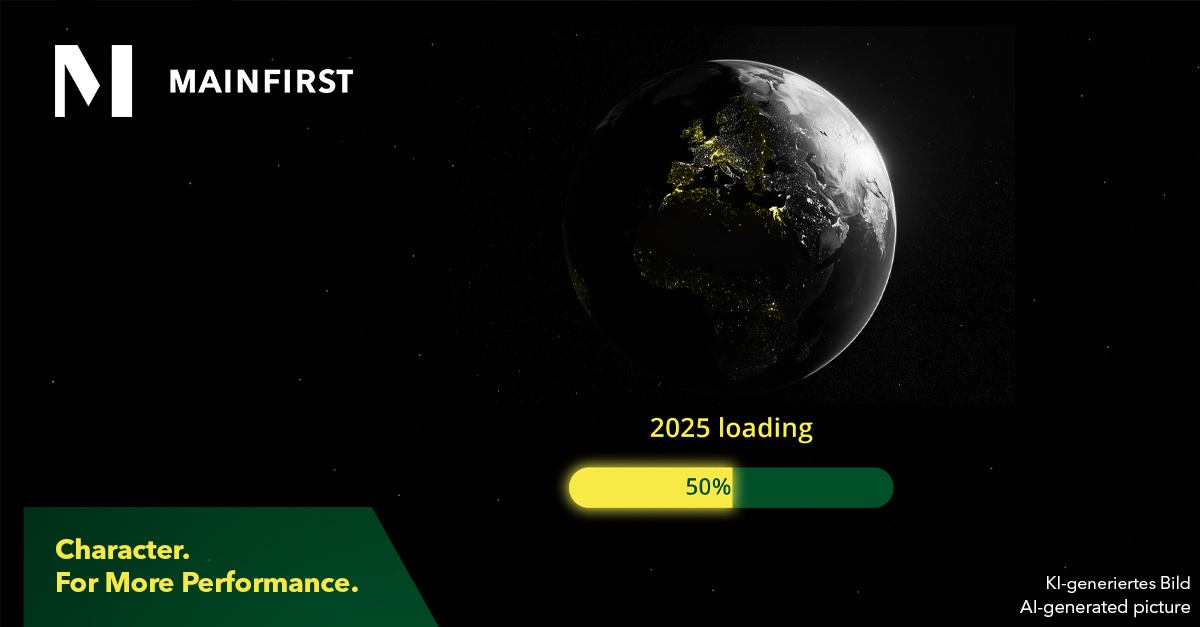Interest Rate Outlook, Technology, Geopolitics: Capital Markets Under Pressure
The first half of 2025 saw a complex mix of geopolitical tensions, technological upheavals, and monetary policy decisions. Despite the numerous challenges faced, the capital markets demonstrated overall resilience, driven by robust US economic data, robust demand for emerging technologies, and anticipation of imminent interest rate reductions in the US.
The global economy developed unevenly in the first half of the year. The US economy continued to grow moderately, expanding by around 2.2%, while Europe stagnated, growing by just under 1%. China is attempting to stabilise its economy, but structural issues and low consumer confidence are hindering growth. Declining global inflation opens up scope for monetary policy, albeit at different times and with different strategies.
Political Risks and Deficits Weigh on the Dollar
At the beginning of June, the ECB sent a key signal by continuing its course of reducing interest rates, which has been in place since June 2024, and lowering key interest rates again by 25 basis points. In contrast, the Federal Reserve in the US remains cautious, despite political pressure from the White House to lower interest rates too. The US Federal Reserve wants robust evidence of a sustained slowdown in inflation before acting. Moody's was the last of the three leading rating agencies to downgrade its US credit rating from the top rating. This primarily put pressure on long-term bonds. Yield curves in the US and Europe steepened significantly in the first half of the year, indicating growing expectations of interest rate cuts despite stable long-term growth forecasts.
In this election year, US trade policy has once again become protectionist. New tariffs on Chinese technology goods and tighter export controls are causing market uncertainty. Transatlantic relations are also under strain, particularly with regard to industrial standards and technology transfer.
So far this year, the US dollar has weakened against major currencies. This is due to a combination of factors, including the Fed's cautious stance, growing political uncertainty, a rising budget deficit, and persistent current account imbalances. This has supported commodity prices, particularly those of precious metals.
Gold Up, Oil Down, Tech on Top: 2025 Mid-Year Market Snapshot
The global competition for raw materials, such as rare earths, is intensifying. Europe and the US are seeking greater independence from Chinese supply chains by developing their own production capabilities. However, alternative sources of raw materials remain costly and labour-intensive. Companies along the value chain, from mining to battery production, are receiving greater strategic attention.
Gold prices rose by around 26% in the first half of the year, reaching a new all-time high. In addition to geopolitical tensions and a weak US dollar, high demand from institutional investors also supported precious metal prices. Silver and platinum also benefited from this situation. However, oil prices remained under pressure despite the ongoing crises in the Middle East. Increased production in the US and global demand meant that prices remained stable, staying below USD 80 per barrel. Consequently, oil and gas stocks were not among the winners in the first half of the year.
Share price gains were driven again by US technology companies. In particular, major investments in new data centres announced by leading cloud and AI providers fuelled market speculation. Microsoft and Amazon, for example, are investing heavily in additional computing power. Nvidia remains in the spotlight, with deliveries of its new Blackwell chips getting off to a flying start. Demand for high-performance GPUs for training AI models is exceeding expectations, which has had a positive effect on sales and margins.
Progress was also made in the field of autonomous driving, with robot taxi trials expanding to several US cities. Companies such as Waymo, Apollo Go and Tesla have stepped up their pilot projects, which is a sign of increasing technical maturity and growing regulatory leeway.
Outlook for the second half of 2025
The market environment is expected to remain challenging in the second half of the year, with geopolitical factors and central bank policy set to play a key role. However, structural trends, particularly those relating to technology, critical commodities and growing consumption in Asia, offer significant opportunities for long-term investors.
Capital markets are likely to remain volatile this year, caught between political uncertainty and technological optimism. A smart allocation strategy that focuses on the growth trends of our time and considers the bigger picture beyond short-term headlines will remain crucial.


